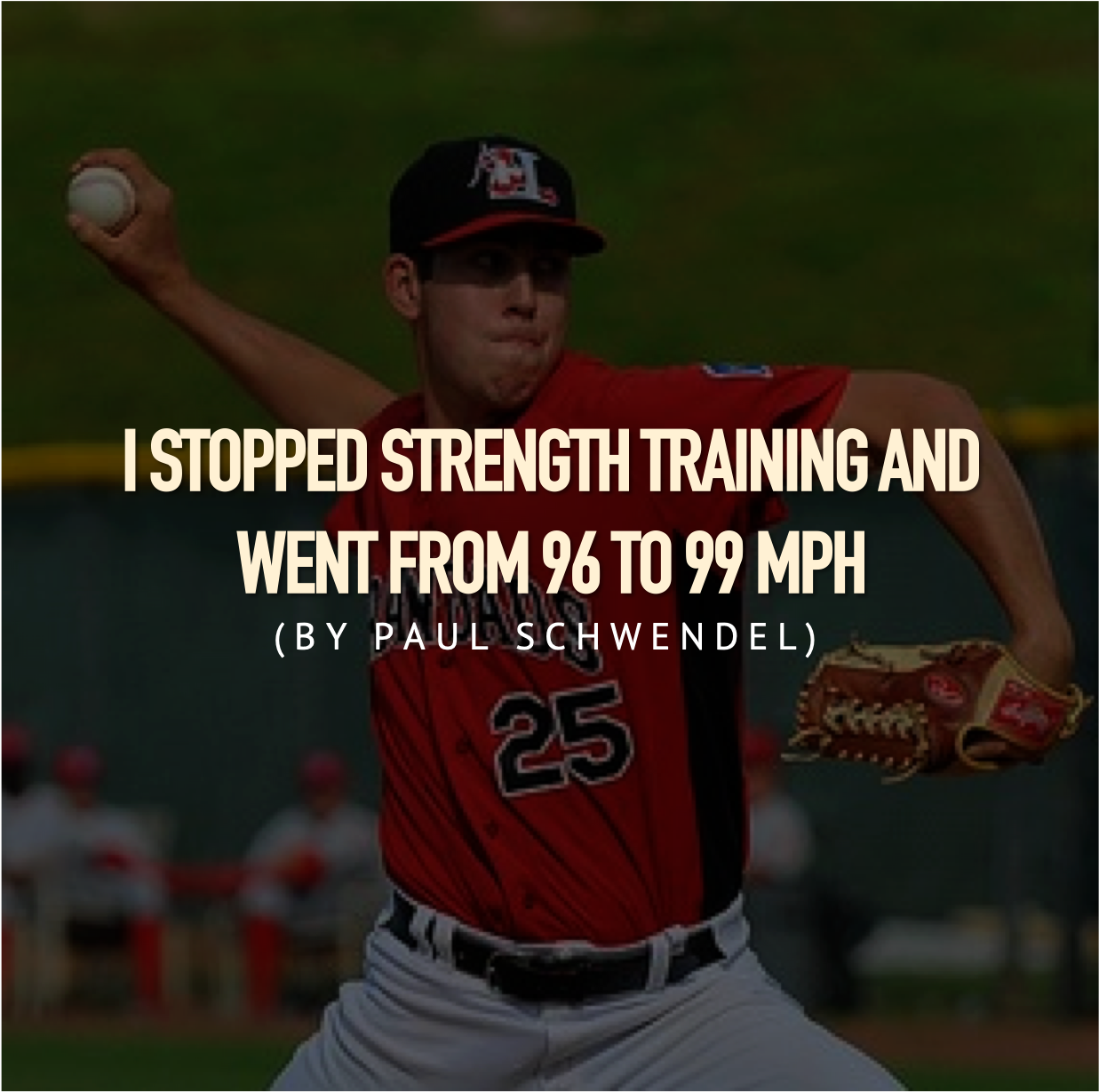Just to add the pile & if it stirs up questions or controversy:
Legs and power
I would say that legs matter insofar as they need to be limber and strong enough to be able to move you in balance, and I now suspect that you get diminishing returns from leg strength once you get past a threshold sufficient to manage the ground forces. This is still a nice science-informed discussion of these issues (I've looked into it since then). I think it's important to keep in mind that "strength" is not really just one thing in sports, which I didn't really understand until I read more.
Tread Athletics Performance Coach Paul Schwendel shares his experience and training strategy from 2020, where he made his way back into pro-ball at 31 years old and gained nearly 4 mph to his average fastball.

treadathletics.com
On casual inspection, it looks to me like the physically heavier crushers on tour have clearly more hypertrophically developed legs and hips, maybe just proportional enough to their body mass. A lot of the lighter guys seem to have leg and hip mass pretty proportional to their overall size. Eagle has a pretty horizontal/very ground-leveraging form and it always looked like he actually has pretty well-developed legs and hips for his otherwise super slim body. Gannon's form looks maybe a little more "centrifugal" to me than Eagle's and I wonder how he'll look as he matures - I know he was putting time in the gym too. Wiggins and Brodie look like they have well developed legs, etc. Looks can be deceiving and hypertrophy is not always strongly correlated with slow or fast twitch or dynamic strength, etc.
Legs in the context of the tilted axis at the core of the swing theory***
Part of the swing theory in Fundamentals involves a complex movement on a tilted dynamic axis - that's the fundamental idea, really. Even just today I'm realizing how much centrifugal effects on the tilted axis can drive the "easy power" component of a swing (or be a rate-limiter if you don't have it). In terms of achieving maximum swing power output in the context of anything else, very interesting questions there. Legs need to be strong and coordinated and flexible enough to move you in balance (which not all of us have), but I wouldn't be surprised if the carry through of momentum + centrifugal force on the tilted axis is a large % of the power.
Admittedly I didn't really understand how this felt or how to do it at all in a DG swing myself until SW helped me with sledgehammer throws. The idea is that the low effort power swing uses the baseball-like axis, but further closed off for a backhand. Need the legs to be strong enough to handle whatever ground forces you're cueing up.
This pretty well sums up the dynamic I'm talking about:
Examples like Jarvis brothers + young McBeth are good "minimalistic" form examples of the swing theory in Fundamentals.
Proposed Answer
So what, "good enough" baseball-like legs relative to your body mass are the minimum you need to swing for "easy" force?
That's a lot of words to say "legs in the right shape and braced to leverage a disc out like Ken Griffey swings a bat."
***I think Coach Taylor for instance agrees about a version of a tilted axis, but disagrees about some areas of implementation/relative sources of power. Still getting caught up there when I get time.

